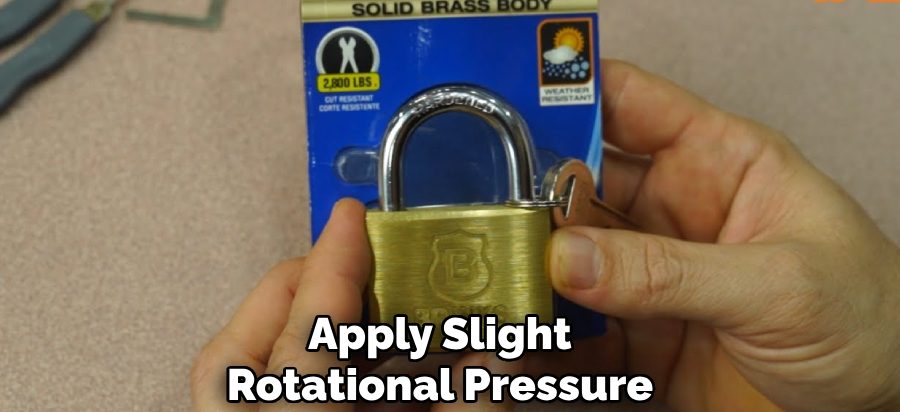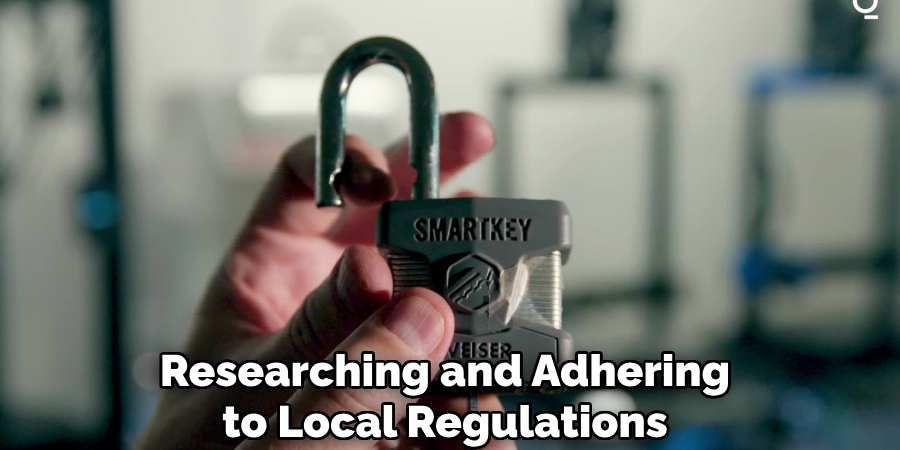Brinks locks are renowned for their excellent security features, making them a popular choice for both residential and commercial applications. Designed with durability and reliability in mind, these locks provide peace of mind for property owners seeking robust protection. However, there are circumstances where knowing how to pick Brinks lock becomes essential. These situations may include losing your keys, needing emergency access to a secured area, or practicing lock picking skills as part of professional locksmith training.

It is crucial to emphasize that picking a lock without proper authorization is illegal and unethical. Therefore, this guide is intended solely for individuals working on locks they own or have explicit permission to handle. Adhering to these legal and ethical boundaries ensures that the skill of lock picking is used responsibly and appropriately, whether for education or practical purposes.
Understanding How Brinks Locks Work
Brinks locks are widely used for their reliable security features and robust design. The pin tumbler system is at the heart of their mechanism, a common design in modern locks. This system uses a series of pins and springs within a cylinder, which must be aligned correctly to allow the lock to turn. When the correct key is inserted, it raises the pins to the appropriate height, creating a “shear line” that enables the cylinder to rotate and the lock to open.
Key Components
The pin tumbler mechanism in Brinks locks consists of several vital components. These include the pins, which are divided into key pins (in contact with the key) and driver pins (pushed by springs). The springs apply constant pressure to the pins, ensuring they fall into place when the key is removed. The cylinder houses these components and rotates freely once the shear line is achieved. Each part works harmoniously to securely fasten the lock while allowing smooth operation with the correct key.

Security Features
Brinks enhances the basic pin tumbler design with advanced security options. For instance, they may use spool pins or serrated pins, which are specially designed to resist picking by creating additional false sets during manipulation. These features increase the difficulty for unauthorized access, maintaining the lock’s integrity under attempted breaches. This combination of a trusted mechanism and thoughtful security enhancements makes Brinks locks popular for safeguarding property.
Tools Needed for Picking a Brinks Lock
Successfully picking a Brinks lock requires the right tools and a clear understanding of their functions. Below is a list of essential and optional tools to help with the task:
Essential Tools
- Tension Wrench: This tool is critical for applying rotational pressure to the lock’s cylinder. Without proper tension, the pins cannot be set correctly.
- Various Lock Picks:
- Hook Pick: Useful for addressing individual pins with precision.
- Rake Pick: Ideal for quickly manipulating multiple pins in beginner-friendly locks.
- Diamond Pick: Effective for reaching tricky pins or dealing with locks requiring finer manipulation.
Optional Tools
- Transparent Practice Lock: A great learning tool for beginners, allowing a clear view of pin movements and how they correspond to tool use.
- Pick Gun or Electric Pick: Advanced tools designed for faster and more efficient manipulation, suitable for experienced users.
Safety and Care
When handling these tools, apply gentle, controlled movements to avoid bending or breaking them. Excessive force can damage the lock, requiring repairs or replacement. Always practice ethical and legal use of lock picking tools, as these skills must only be employed with permission or for educational purposes.
Preparing to Pick the Lock
Setting Up Your Workspace
Before beginning, ensure your workspace is clean, well-lit, and clutter-free. Arrange your lock picking tools in an organized manner to avoid interruptions. Having a stable surface to work on can help with precision and maintain focus.
Understanding the Lock Orientation
Take time to examine the lock to understand its structure and orientation. Locate the keyway and determine where to insert the tension wrench and pick. Observing how the key would normally function can provide helpful insights into the lock’s mechanism.

Applying Tension
Proper tension is critical in lock picking. Based on the lock’s design, insert the tension wrench into the bottom or top of the keyway. Apply firm yet gentle pressure to allow the pins to bind. Avoid using excessive force, which could damage or hinder your progress. Patience and a steady hand are key.
How to Pick Brinks Lock: Step-by-Step Guide
Lock picking is a skill that requires precision, patience, and practice. To effectively pick a Brinks lock, follow the steps below carefully:
Step 1: Insert the Tension Wrench
Begin by inserting the tension wrench into the bottom or top of the keyway, depending on the design of the specific lock. Apply consistent pressure with the wrench. The tension you apply acts as a substitute for the natural turning motion of a key, so ensure it is firm but not excessive. Too much tension can bind the pins incorrectly, while too little might prevent progress.
Step 2: Insert the Pick
Next, take your lock pick and insert it into the keyway. Start by feeling for the pins with the pick, beginning from the back pin and working your way forward. This requires a gentle touch to identify each pin’s location and how it responds to slight manipulation.
Step 3: Raking or Single Pin Picking Techniques
Depending on your preference and the lock’s complexity, you can utilize either the raking or single pin picking technique.
- Raking Technique: Using a rake pick, apply sweeping motions to manipulate multiple pins simultaneously. This method is generally faster and ideal for less intricate locks.
- Single Pin Picking (SPP): For greater precision, lift each pin individually with your pick until it reaches the shear line. This technique requires more time and skill but is effective for locks with added security features.
Step 4: Setting the Pins
One by one, lift the pins with your pick and apply slight pressure via the tension wrench. When a pin sets correctly, you will feel a small click or a slight movement in the plug. Use this feedback to gauge your progress and continue working on the remaining pins.
Step 5: Turning the Plug
Once all the pins are set, the plug will rotate under the tension the wrench applies. Apply slight rotational pressure to turn the cylinder and open the lock. Be patient, as excessive force could damage the lock mechanism.

Common Challenges and How to Overcome Them
- Dealing with Security Pins: Brinks locks often include security pins that make picking more challenging. These pins simulate false sets, so proceed carefully and identify the subtle differences in feedback when setting each pin.
- Avoiding Over-Tensioning: Applying too much pressure with the tension wrench can make the pins harder to manipulate. Be mindful of maintaining just enough tension to allow for smooth pin movement without straining the lock mechanism.
With practice and persistence, you can master the art of picking a Brinks lock. Always use your skills responsibly and ensure you have the appropriate permission before attempting to pick any lock.
Practice Tips and Tricks
Developing a feel for the pins and tension is crucial when mastering lock picking techniques. Start by understanding the subtle feedback each pin provides as you apply tension with the wrench. This tactile sensitivity takes time, so focus on practicing with deliberate and careful movements.
Using practice locks is an excellent way to hone your skills without the pressure of damaging a lock or breaking the law. Transparent locks are beneficial, allowing you to observe the internal mechanisms while experimenting with tension and pin placement. They provide a safe and risk-free learning environment.
Additionally, watching tutorials from experienced lock pickers can significantly improve your understanding and approach. These demonstrations often offer practical insights and strategies that you can incorporate into your practice. Remember, patience is essential—achieving consistency takes time and persistence, so don’t get discouraged by initial difficulties.
When to Call a Professional Locksmith
While lock picking can be an effective and educational skill, there are times when calling a professional locksmith is the safer and more practical option. If repeated lock picking attempts are causing visible damage to the lock or if the mechanism feels jammed, it’s best to stop and seek expert assistance to avoid further complications. Additionally, certain situations, such as high-security locks or electronic locking systems, are better handled by professionals with specialized tools and expertise.
It’s also crucial to ensure legal compliance. Attempting to pick a lock without proper authorization is against the law and can lead to serious consequences. If you’re locked out of your own property or require assistance in any other legitimate context, a licensed locksmith will resolve the issue efficiently and without legal risk. Understanding these scenarios will help you protect your property while adhering to ethical and legal standards.
Legal and Ethical Considerations
Lock picking is a highly regulated activity, and laws surrounding its practice vary across regions. Many jurisdictions restrict the possession of lock picking tools to licensed professionals, while others allow ownership but impose strict rules on their use. Researching and adhering to local regulations is essential to avoid potential legal repercussions. Ethical guidelines are equally important; only attempt to pick locks that you own or have explicit permission.

This distinction ensures that the practice is conducted responsibly and without violating property rights. Unauthorized lock picking is illegal and can lead to severe consequences, including fines, criminal charges, and a permanent record. Adhering to legal frameworks and ethical principles protects you from legal trouble and upholds this skill’s integrity as a legitimate trade or hobby. Always prioritize accountability and respect for others’ property.
Conclusion
Learning how to pick Brinks lock models safely and effectively requires a combination of patience, the right tools, and technique. Begin by understanding the lock’s mechanism, practicing with legal permission, and honing your personal or practice lock skills. Always remember that responsible lock picking means adhering to legal boundaries and ethical use of this skill.
Unauthorized attempts can have serious ramifications, so it’s crucial to exercise accountability. For complex situations, consider professional locksmith services. By practicing responsibly and respecting others’ property, you can preserve the integrity of lock picking as a legitimate trade or hobby.

